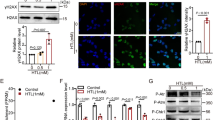Abstract.
The observation of elevated maternal plasma homocysteine concentration in pregnancies affected by neural tube defects (NTD) suggests that folate metabolism may be disturbed in NTD cases. In addition, studies on the chick embryo suggest that hyperhomocysteinaemia may contribute directly to the development of NTD. In order to test the hypothesis that homocysteine may cause NTD, we cultured mouse embryos in the presence of homocysteine thiolactone during the period of cranial neural tube closure. At doses of 0.5 mM or above, exposure to homocysteine thiolactone caused growth retardation, blisters and abnormalities of somite development. Despite the teratogenic effects of homocysteine we did not detect any increase in the incidence of neural tube defects. Neither was there an effect on the incorporation of thymidine into DNA, a potential marker of alterations in the folate or homocysteine/methionine cycles. These observations suggest that homocysteine is unlikely to be a direct cause of NTD in humans. Rather, the elevated levels of homocysteine in human NTD pregnancies may reflect a disturbance in folate-related metabolism.
Similar content being viewed by others
Author information
Authors and Affiliations
Additional information
Electronic Publication
Rights and permissions
About this article
Cite this article
Greene, N.D., Dunlevy, L.P. & Copp, A.J. Homocysteine is embryotoxic but does not cause neural tube defects in mouse embryos. Anat Embryol 206, 185–191 (2003). https://doi.org/10.1007/s00429-002-0284-3
Accepted:
Issue Date:
DOI: https://doi.org/10.1007/s00429-002-0284-3




